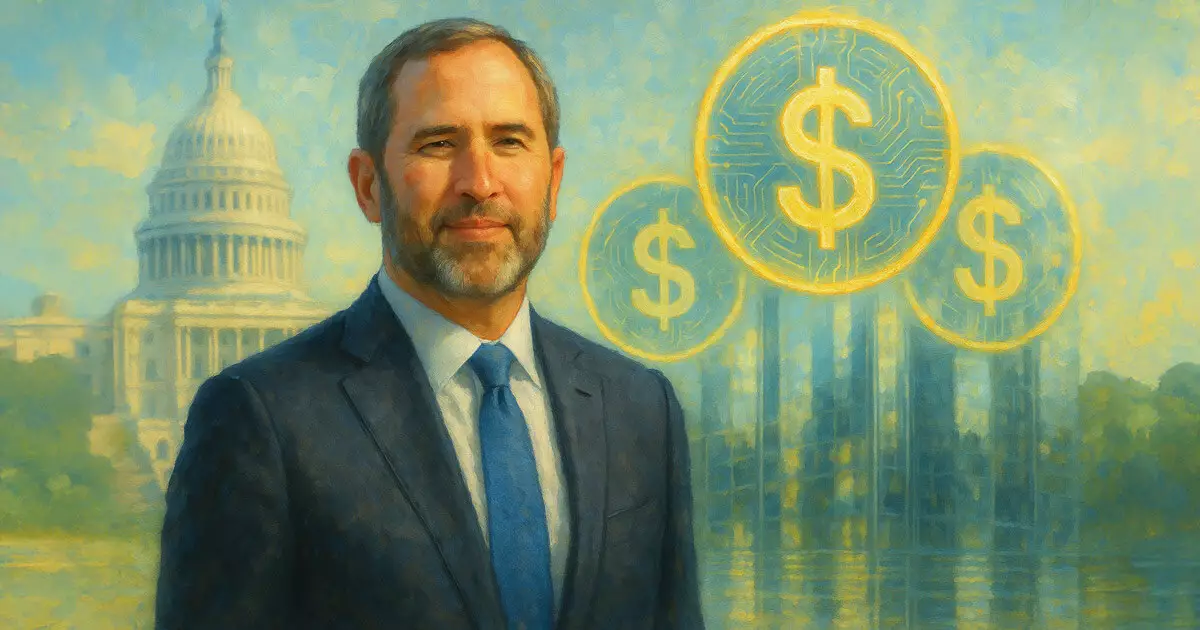In a landscape increasingly dominated by technological advancements, Ripple’s CEO Brad Garlinghouse has thrown down the gauntlet, urging US lawmakers to expedite the creation of a robust regulatory framework for stablecoins. The urgency in his message isn’t just rhetoric; it stems from the staggering figure that was recently reported: stablecoin transaction volumes surged to an unprecedented $1.82 trillion in March 2025. Such numbers underscore a critical trend—the global embrace of stablecoins is not merely a passing phenomenon but an essential pivot in our economic structure. Without immediate action, the United States risks falling behind in what could potentially be its most transformative financial opportunity in decades.
The Cost of Inaction
Garlinghouse’s warnings paint a vivid picture of the impending consequences of regulatory inaction. When industry leaders like him emphasize the risk of America losing its competitive edge in the global financial landscape, they’re not being alarmist—they’re being realistic. In a recent vote, lawmakers shot down the GENIUS Act, which was designed to lay the groundwork for a cohesive federal approach to stablecoin regulation. This was not just a procedural setback; it was a moment in which US economic strategy blinked. Treasury Secretary Scott Bessent’s assertion that this act represented a “once-in-a-generation opportunity” echoes the sentiment that without a regulatory framework, the operation of stablecoins will devolve into a chaotic patchwork of state laws, stifling innovation and growth.
The Transformative Potential of Stablecoins
Stablecoins, often pegged to traditional fiat currencies like the US dollar, offer a unique advantage—price stability. This trait distinguishes them from the wild fluctuations of cryptocurrencies like Bitcoin, offering a practical and reliable utility for a wide range of transactions, from peer-to-peer payments to cross-border trade. It has become increasingly evident that major corporations, including powerhouses like Stripe and Meta, are taking note. They recognize stablecoins as pivotal elements for enhancing payment efficiency, and their rising interest hints at a paradigm shift that could redefine the financial industry.
The Political Missteps That Could Cost Us
Yet the political undercurrents steering regulatory decisions remain a concern. The recent vote against advancing the GENIUS Act could be interpreted as a failure to recognize the shifting tides of global finance. The world is watching; countries are racing to implement frameworks that will bolster their digital currency sectors. A lack of a clear regulatory stance from the US might empower rival nations to take the lead in this transformative financial technology, perpetually undermining the dollar’s status as the world’s reserve currency.
As Garlinghouse and other industry leaders articulate their concerns, it’s imperative to understand that we’re not merely discussing coins or tokens. We’re speaking about the future of financial sovereignty and innovation. The momentum is here, and if the US dawdles in establishing clear, progressive regulations, the nation may wake up to find itself a reluctant participant in a financial revolution it could have led. The time for decisive action is now.


Leave a Reply